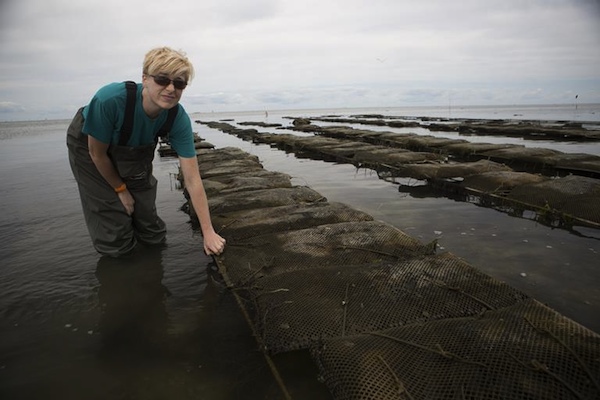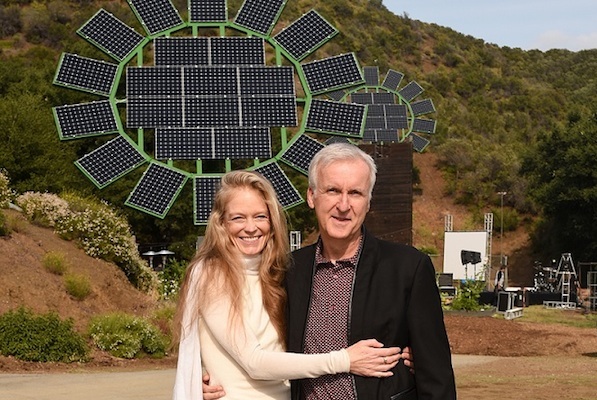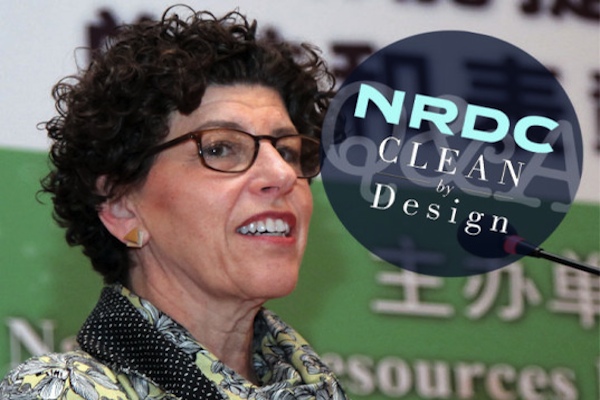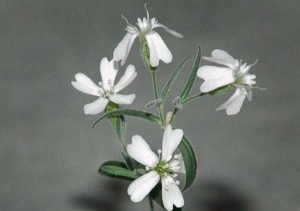During a poetry reading in Missoula, MT, a Vietnam combat veteran reminded his audience that he and other veterans returned not to waves of gratitude, but to a line of protesters calling for peace. He spoke of being a child during the war as he introduced his poem, “I Think I Died In Vietnam.” By its nature, standing a line is combative. Any statement for something is also a statement against something. On the heels now of the largest climate march to date, 310,000 people gathered in the streets of New York City September 21, 2014, we begin a wave of actions with the potential to change the global course from disaster to harmony. Unless all of us work together, this wave will not continue to flow and disharmony will reveal itself as the prevailing chord. As I think of this Vietnam veteran and my own father who served as a surgeon in that war, I, too, consider men who have spent the majority of their lives building businesses in an air of cut-throat competition, my son’s paternal grandfather included. I want compassion for all of them. Man, each in his own way, has slaved to provide for many while protecting those […]
Continue reading... →Director James Cameron has designed Solar Sun Flowers as a gift to his wife, which have been installed on campus at her MUSE School in California. Cameron had five flowers installed on the 22-acre Malibu Canyon campus and they generate roughly 300 kilowatt hours per day. The flowers are expected to offset the non-profit school’s power usage between 75-90%. Amazing! The patent-pending design will soon be an available, free and open-source, to encourage wider use of solar power. Now that’s what we call charitable!
Continue reading... →Ecouterre interviews Linda Greer, Director of the Natural Resources Defense Council Linda Greer ranks among the fashion industry’s leading “toxic avengers.” As director of the Natural Resources Defense Council’s five-year-old “Clean by Design” initiative, Greer is on the front line of a sector burdened by high energy and water use and endemic, often catastrophic, pollution. Her Sisyphean task? To leverage the purchasing power of multinational brands and retailers to chip away at the environmental impacts of their manufacturing abroad, beginning with the biggest offender: China. As NRDC prepares to, in its own words, “aggressively expand” the program’s reach, Ecouterre caught up with Greer to learn about her “win-win” strategy, what the early days of Clean by Design were like, and how we can differentiate the “true-gooders” from the “green-washers” in a post–corporate-social-responsibility world. E: How did Clean by Design get its start? LG: In 2008, the president of NRDC asked me to develop a project that would help to reduce the heavy industrial air and water pollution in China and serve as a model the country could use to accelerate its efforts. To do so, I first selected an industry with a heavy environmental footprint. Textiles distinguished itself as one […]
Continue reading... →While many of us may take it for granted, the planet we live on is the very foundation of all life as we know it. Home to between 10-14 million species of life, we share this planet with billions of others that have an equal stake in maintaining the planet. It is for this reason that many have come to be cautious about the impact we have on many creatures’ natural habitats. Issues such as deforestation and water/food contamination have a significant impact on the quality of life for animals. In many cases, this can become an issue of life or death.
Continue reading... →This is a photo of the Brooklyn Battery Tunnel in NYC — FLOODING. New York Governor Cuomo calls this another 100 year flood that happens every two years now. Is this the new normal?
Continue reading... →Global warming isn’t a prediction. It is happening. That is why I was so troubled to read a recent interview with President Obama in Rolling Stone in which he said that Canada would exploit the oil in its vast tar sands reserves “regardless of what we do.”
If Canada proceeds, and we do nothing, it will be game over for the climate.
Continue reading... →Keith Brunner from Gears of Change Youth Media Project reports back from the side event “Women’s critical perspectives on the green economy” carried out during the UN Rio+20 intercessional (March 25-27) at the UN headquarters in New York.
The “green economy” will be a shot in the arm for ailing global markets- a rush of new commodities and investment frontiers, packaged neatly within a UN mandate for “sustainable development.” But how will it affect those who are already the most marginalized?
This afternoon I attended an event entitled “Women’s critical perspectives on the ‘green economy.” Participants painted a picture of a future far different from the heady visions on display at the corporate side events. The “green economy,” according to the panelists, will exacerbate already growing gender violence, urban migration and loss of traditional skills and knowledge amongst women, with women in the Global South being hit the hardest.
Isis Alvarez, with Global Forest Coalition, began the panel by noting that: “Biodiversity and the environment turned into marketable goods seems to be the current approach to conservation. And markets necessarily need privatization. But what are the consequences for women, if a resource which used to be accessible is now privatized?”
She continued: “Women usually provide their families with key resources for their livelihoods, such as fuel wood, medicinal plants, fodder, food, nuts, they collect seeds, so biodiversity means everything to them, as they depend on the non-monetary benefits of biodiversity.”
Continue reading... →Melting permafrost is not helping climate change, as it gives off gusts of globe-warming methane. But the world’s scientists are finding a treasure trove in areas where the snow melts.
A team at the Institute of Physicochemical and Biological Problems in Soil Science, Russian Academy of Sciences in Moscow, Russia discovered – in a fossilized squirrel burrow in Siberia – remnants of the ice-age flowering plant Silene stenophylla. The plant had been buried at a depth of 38 meters in sediments with a temperature of ?7°.
Radiocarbon dating of the plants seemed to show that an ancient squirrel stashed them around 31,800 years ago, just before ice rolled into the area near the Kolya river.
Scientists used growth hormone to coax silene stenophylla back to life and eventually, back to bloom. They are now, according to the Proceedings of the National Academy of Sciences report ” the most ancient, viable, multicellular, living organisms.”
The discoveries of this ‘ancient DNA’ as permafrost in colder regions melts is becoming a trend. Sometimes, seed finds turn out to have been deposited much later than scientists first believe, but the Soil Cryptology Lab in Moscow went to some lengths to ascertain that silene stenophylla‘s seeds were really as old as they seemed to be.
As permafrost melts, there will be more finds like silene stenophylla, and some scientists think ancient seeds might even begin to bloom spontaneously, giving hope that previous extinct varieties of plants will come back to life.
And if not, there’s always Norway’s seed vault to provide some genetic info.
Continue reading... →








